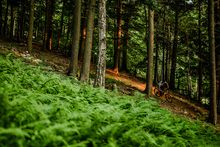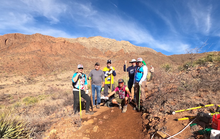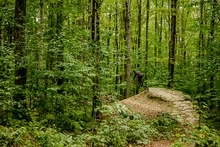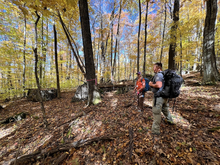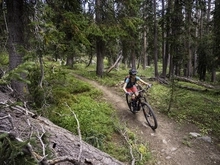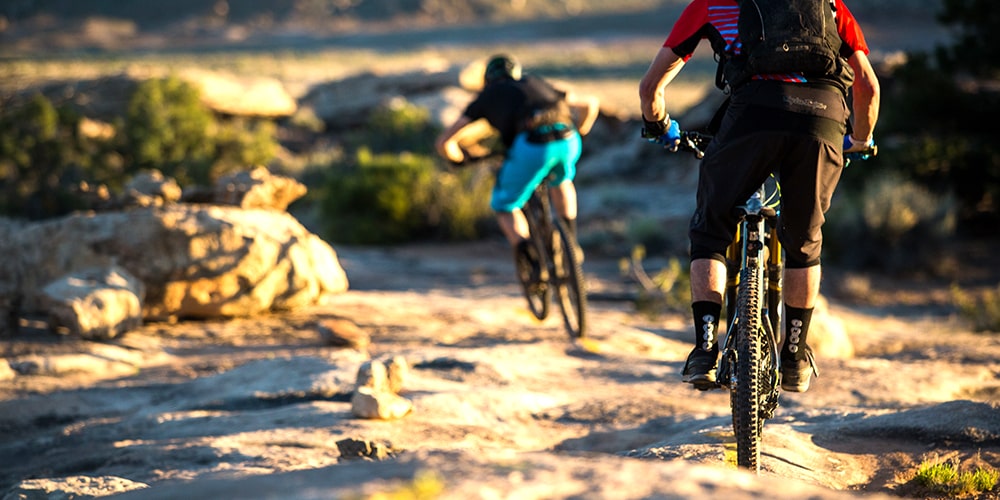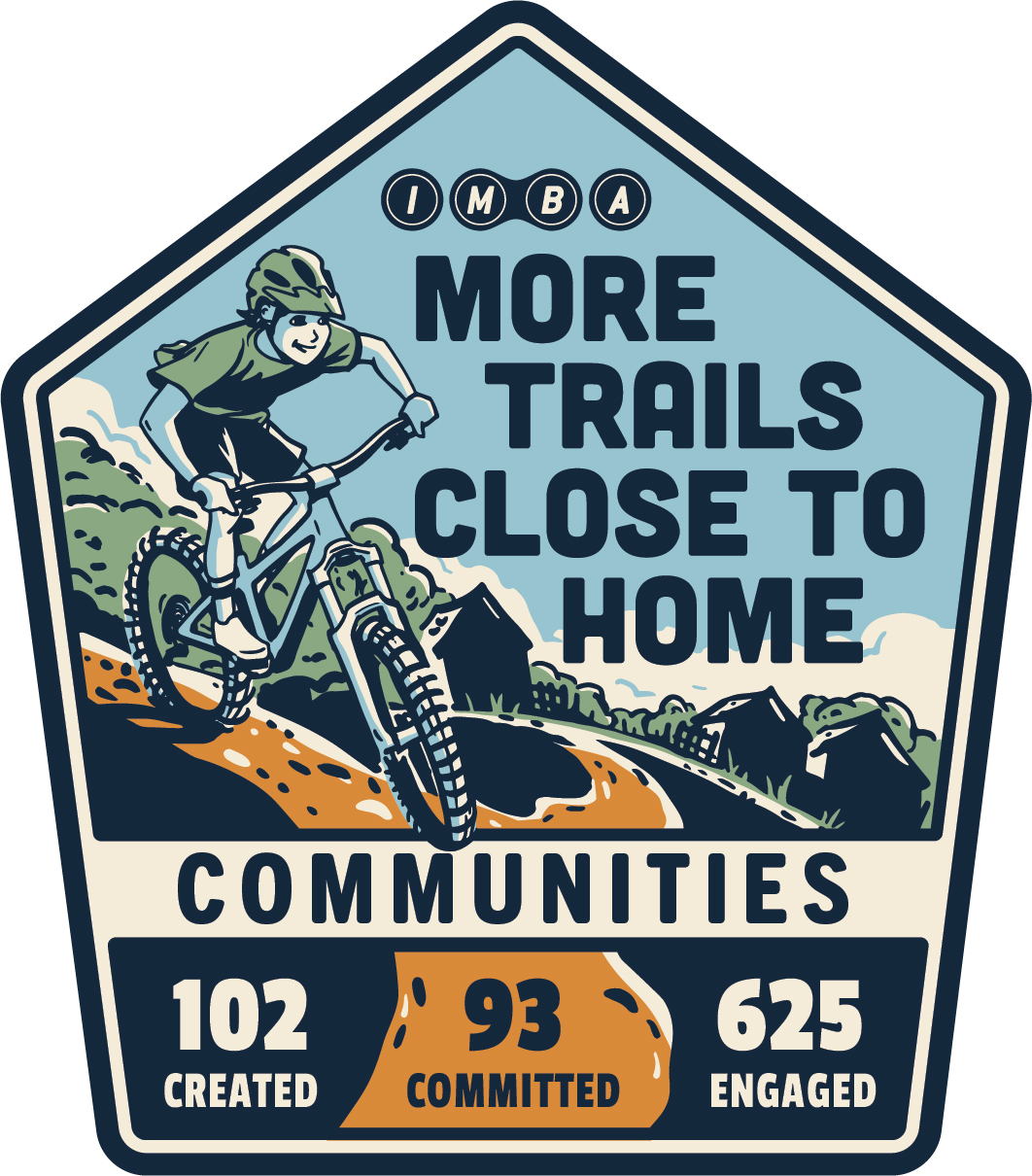Mountain Bikers Riding Bikes, Talking Trails #8
Nestled at the foot of the Allegheny Mountains in West Virginia’s Eastern Panhandle is Cacapon Resort State Park. Built in the 1930s by the Civilian Conservation Corps, Cacapon has long been a destination for hikers, equestrians, anglers, and golfers. Now, the park is looking to add mountain bikers to that list.

Just a two-hour drive from major metropolitan centers like Baltimore and Washington, D.C., Cacapon is ideally situated to become the next Mid-Atlantic mountain biking hub. To help them achieve that, the Cacapon Resort State Park Foundation applied for an IMBA Trail Accelerator Grant (TAG) in 2019.
Apply for a Trail Accelerator Grant
TAG funds are used specifically to help communities with professional trail planning and consultation services. The park had already begun construction on a 2.2-mile beginner trail designed for hosting National Interscholastic Cycling Association (NICA) races, but if more people were going to visit Cacapon to ride, the park knew it needed a comprehensive trail vision.
“The trails here at Cacapon are notoriously West Virginian,” says Cacapon Resort State Park Trail Coordinator Eric Fitzpatrick. “They’re very rocky. There’s not a lot of beginner stuff.”
Before building the NICA course, Cacapon had roughly 10 miles of existing singletrack to ride, but the trails were CCC-built and, as such, decidedly technical in flavor. So when IMBA announced Cacapon as one of the TAG awardees in early 2020, designing a master plan with trail diversity was a key priority.
IMBA Trail Solutions Program Manager Steve Kasacek was instrumental in the design phase of the project. Together, IMBA and Cacapon crafted a bike-optimized master plan that includes 30 miles of trail ranging in difficulty and style from flow trails to black diamond gravity runs and backcountry singletrack. Kasacek says the park’s master plan builds upon the CCC’s legacy by lacing modern machine-built trails with classic handbuilt rock gardens, crib walls, and bike-optimized drops. IMBA is currently working with the Appalachian Conservation Corps and Cacapon volunteers to finish construction of Thunderstruck, a gravity trail funded through Recreational Trail Program (RTP) dollars. After Thunderstruck’s completion later this year, the community will begin another RTP-funded trail build, the momentum from which Cacapon hopes will help to secure future funding for construction of the entire trail master plan.
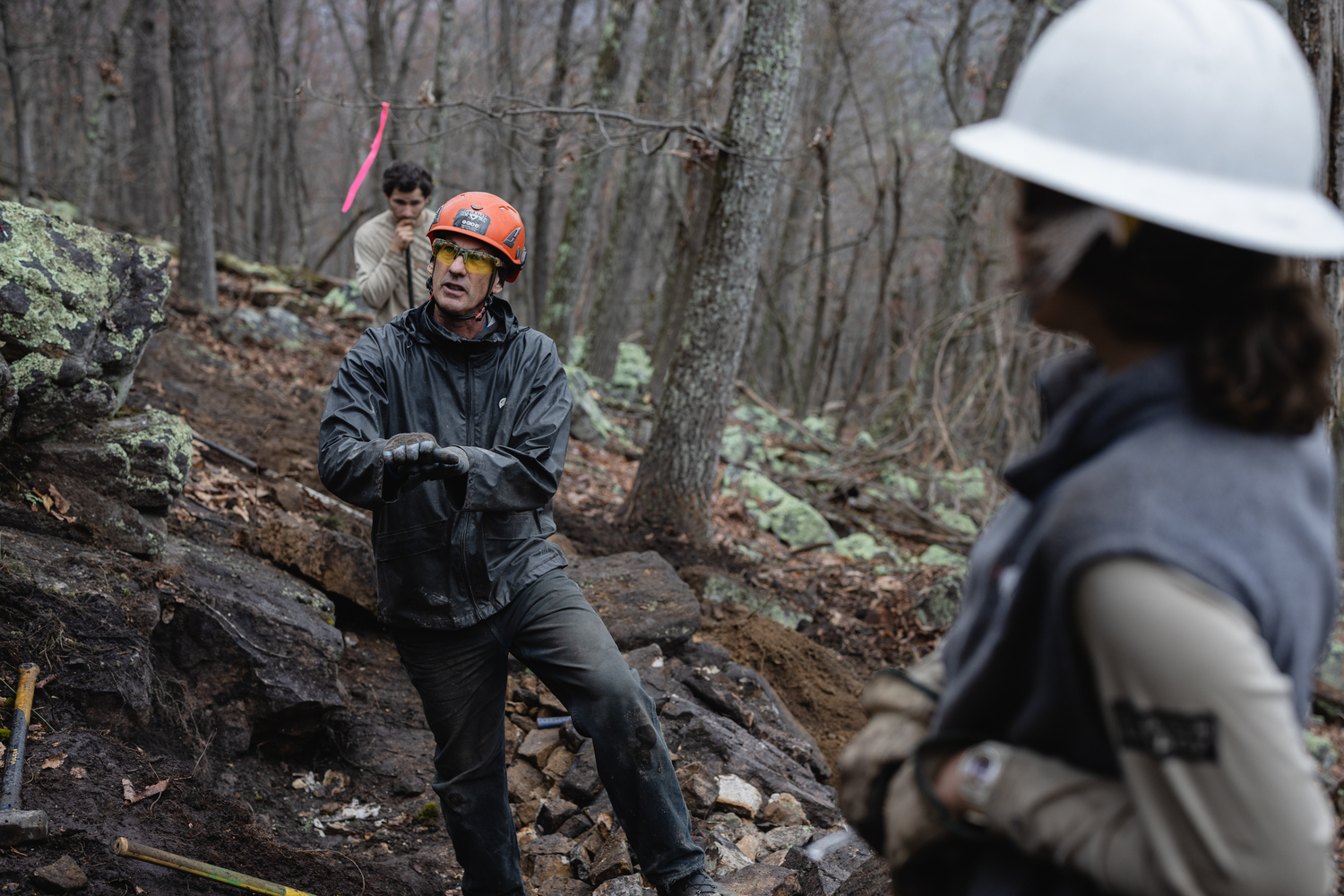
Finding funding for such a large-scale project can be challenging, but the Cacapon community is hopeful it may find an opportunity through the Economic Development Administration (EDA). A coalition of stakeholders, including the West Virginia Department of Natural Resources, Morgan County Commission, West Virginia Department of Tourism, West Virginia University’s (WVU) Brad & Alys Smith Outdoor Economic Development Collaborative, the Region 9—Eastern Panhandle Regional Planning & Development Council, and local friends group recently prepared and submitted an application for $3.5 million in EDA grant funding. The grant is part of the EDA’s American Rescue Plan and specifically falls under the Travel, Tourism, and Outdoor Recreation program.
“I love partnerships and the partnerships that are involved with bringing this project to life are really strong,” says Kasacek. “It’s going to be a huge boon for this area.”
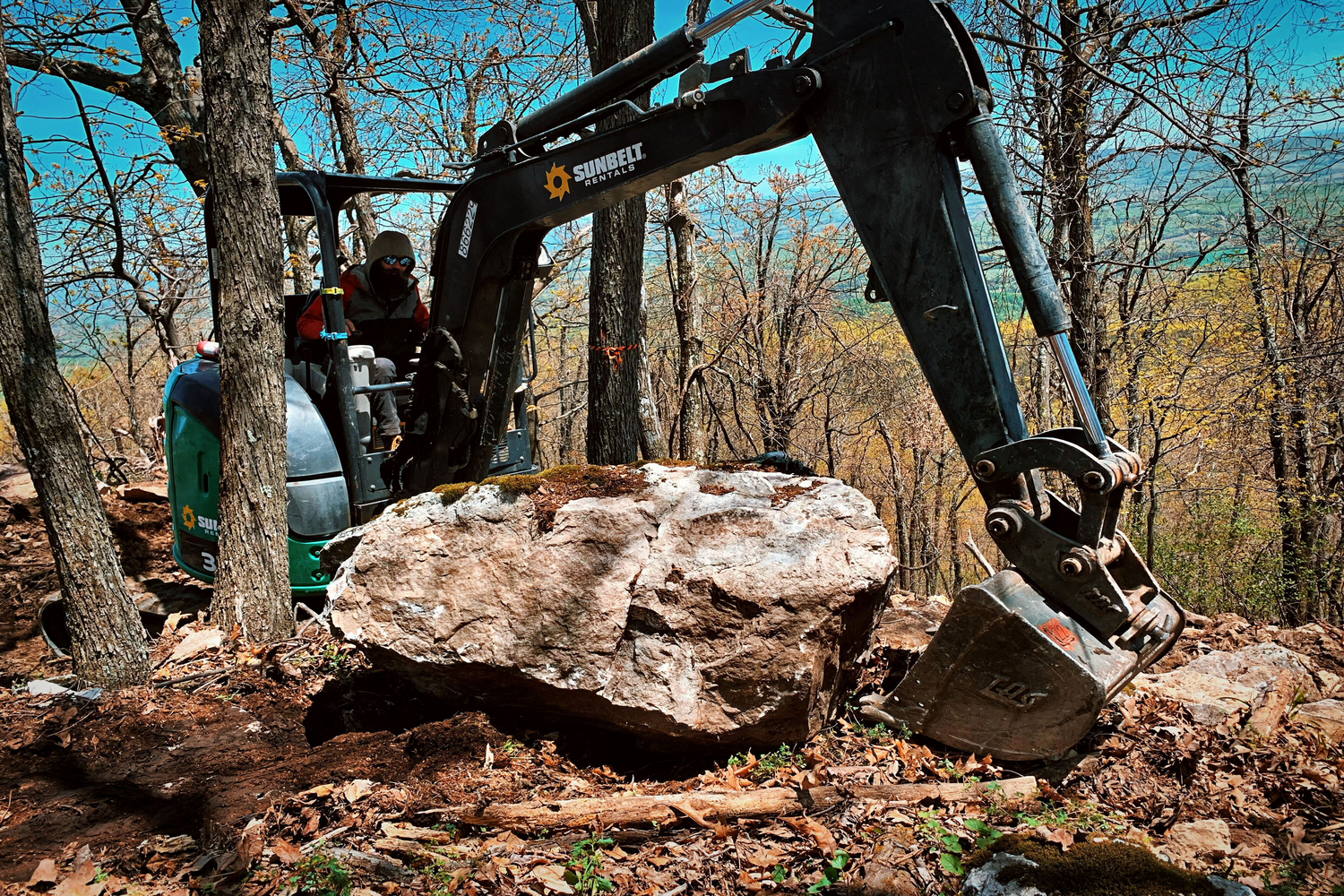
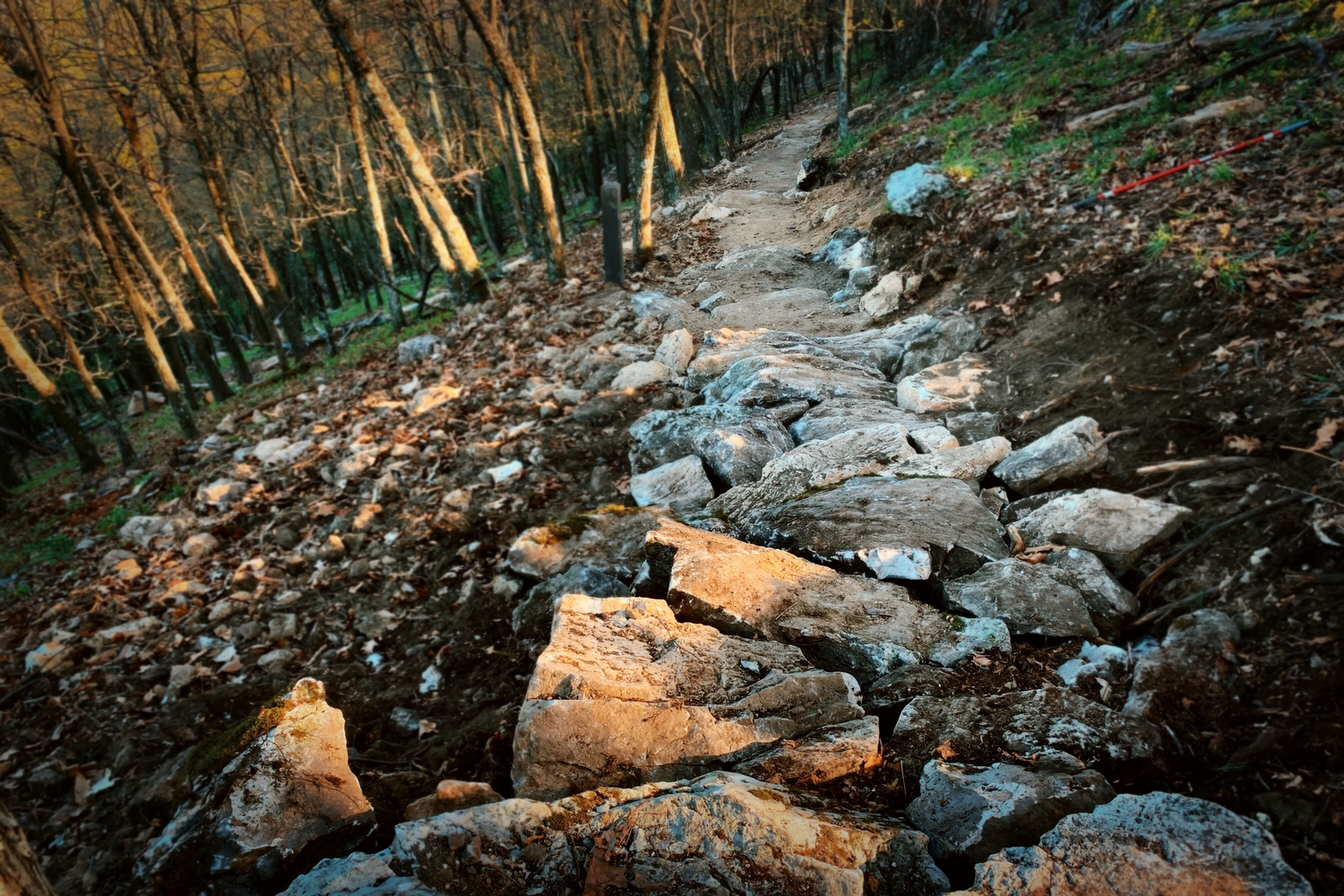
“The Cacapon project highlights the importance of bringing a diverse group of advocates and professionals together to not only develop a plan, but to implement that plan,” says Richard Edwards, Outdoor Recreation Infrastructure Coordinator at WVU’s Brad & Alys Smith Outdoor Economic Development Collaborative. “The future is bright for West Virginia, Eastern Panhandle, and Cacapon riding due to forward-thinking advocates having a vision and bringing a collaborative group of experts to the table.”
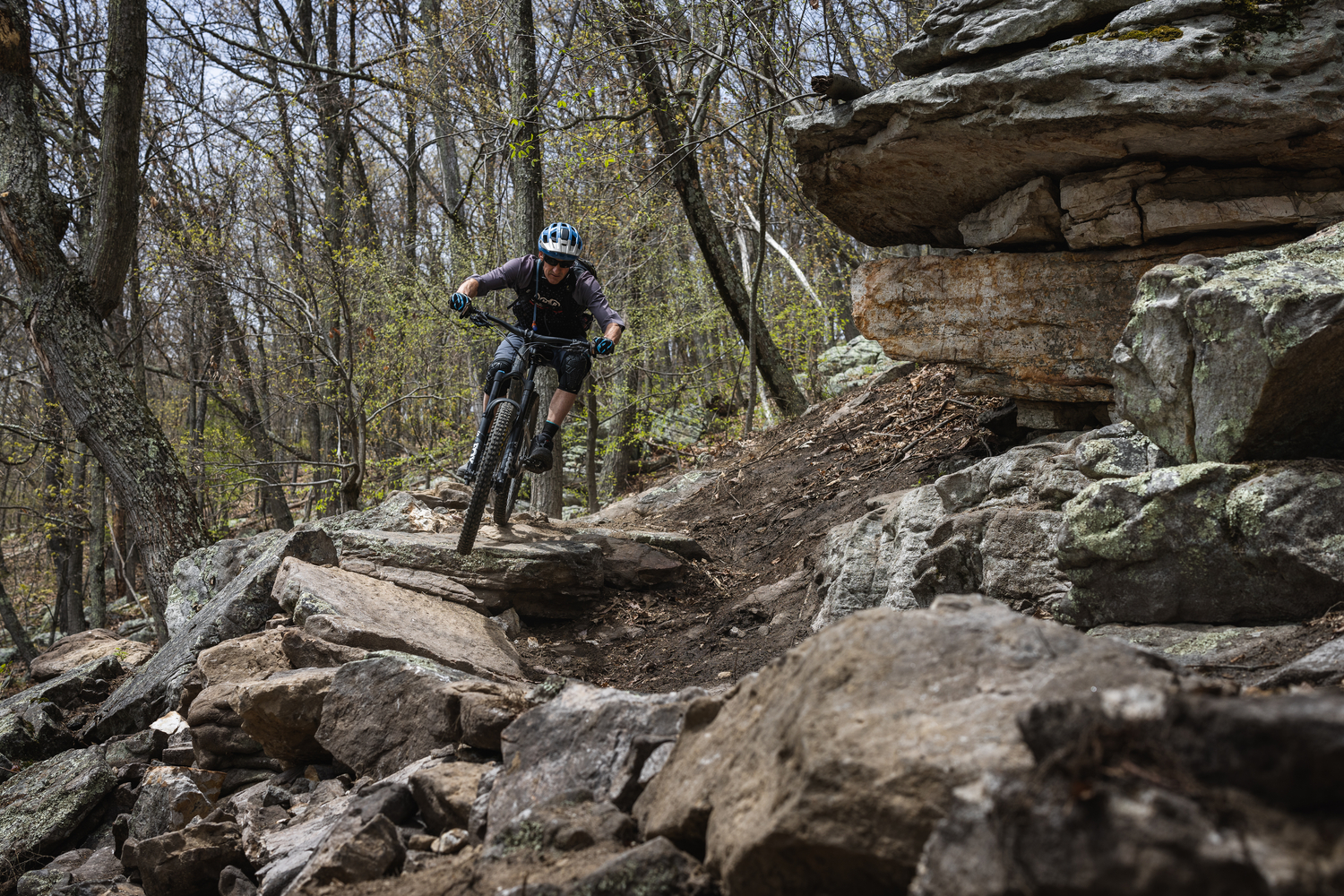
Interested in riding Cacapon? Join Cacapon friends and stakeholders the weekend of September 24, 2022. Visitors will officially be able to ride Thunderstruck and learn more about the latest developments in trail building at the park.
This blog is the second in a three-part series about the people and processes behind the latest Cacapon trails.
Read Part One here, and Part Three here.

